Random thoughts
Thursday, May 17, 2018
WeAreDevelopers 2018 conference notes – Day 2
Related links
Labels: austria, technology, wearedevs, webdevelopment
Wednesday, May 16, 2018
WeAreDevelopers 2018 conference notes – Day 1
Registration was surprisingly fast and painless, a Graham roll and an energy drink as developer breakfast maybe slightly too clichéic (or I am getting old), but fortunately there was plenty of coffee available all day, including decent cappuccino at one of the sponsor booths.
Asked at the conference opening what topics people would be most interested in hearing about, Blockchain came out first, followed by machine learning and, still, devops.
Steve Wozniak rocked the Austria Center with an inspiring “fireside chat”. Talking with the brilliant Monty Munford, The Woz answered questions submitted by the audience and shared his views on anything from the early days of computing and why being a developer was great then (“Developers can do things that other people can’t.”) to self-driving electric cars (overselling and underdelivering) and the Blockchain (too early, similar to the dot com bubble), interspersed with personal anecdotes and, as a running gag, promoting the Apple iCloud.
As a long-time mainframe guy, I liked his claimed his programming language skills too, FORTRAN, COBOL, PL/I, and IBM System/360 assembler, although he did mention playing more with the Raspberry Pi these days.
Mobile payments was a good example of the design principles that made Apple famous and successful. Steve mentioned how painful early mobile payment solutions were, requiring multiple manual steps to initiate and eventually sign off a transaction, compared to Apple Pay where you don’t even need to unlock your device (I haven’t tried either one, and they don’t seem to be too popular yet.)
The most valuable advice though was to do what you are good at and what you like (“money is secondary”), to keep things simple, and live your life instead of showing it off, which is why he left Facebook, feeling that he didn’t get enough back in return. For an absolutely brilliant graphical summary of the session, see Katja Budnikov’s real-time sketch note.
Johannes Pichler of karriere.at followed an ambitious plan to explain OAuth 2.0 from the protocol to to a sample PHP implementation in just 45 minutes. I may need to take another look at the presentation deck later to work through the gory details.
A quick deployment option is to use one of the popular shared services such as oauth.io or auth0.com, but it comes at the price of completely outsourcing authentication and authorization and having to transfer user data to the cloud. For the development of an OAuth server, several frameworks are available including node.oauth2 server for NodeJS, Sprint Security OAuth2 for Java, and the Slim framework for PHP.
In the afternoon, Jan Mendling of the WU Executive Academy looked at how disruptive technologies like Blockchain, Robotic Process Automation, and Process Mining shape business processes of the future. One interesting observation is about product innovation versus process innovation: most disruptive companies like Uber or Foodora still offer the same products, like getting you from A to B, serving food, etc. but with different processes.
Tasks can be further classified as routine versus non-routine, and cognitive versus manual. Traditionally, computerization has focused on routine, repetitive cognitive tasks only. Increasingly we are seeing computers also take on non-routine cognitive tasks (for example, Watson interpreting medical images), and routine manual, physical tasks (for example, Amazon warehouse automation).
Creating Enterprise Web Applications with Node.js was so popular that security did not let more people in, and there was no overflow area available either, so I missed this one and will have to go with the presentation only.
Equally crowded was Jeremiah Lee’s session JSON API: Your smart default. Talking about his experience at Fitbit with huge data volumes and evolving data needs, he made the case why jsonapi.org should be the default style for most applications, making use of HTTP caching features and enabling “right-sized” APIs.
Hitting on GraphQL, Jeremiah made the point that developer experience is not more important than end user performance. That said, small resources and lots of HTTP request s should be okay now. The debate between response size vs number of requests is partially resolved by improvements of the network communication, namely HTTP/2 header compression and pipelining, reduced latency with TLS 1.3 and faster and more resilient LTE mobile networks, and by mechanisms to selectively include data on demand using the include and fields attributes.
Data model normalization and keeping the data model between the clients and the server consistent was another important point, and the basis for efficient synchronizatiion and caching. There is even a JSON Patch format for selectively changing JSON documents.
Niklas Heidoff of IBM compared Serverless and Kubernetes and recommended to always use Istio with Kubernetes deployments. There is not a single approach for Serverless. The focus of this talk was on Apache OpenWhisk.
Kubernetes was originally used at Google internally, therefore it is considered pretty mature already despite being open source for only a short time. Minikube or Docker can be used to run Kubernetes locally. Composer is a programming model for orchestrating OpenWhisk functions.
Niklas went on to show a demo how to use Istio for versioning and a/b testing. This cannot be done easily with Serverless, which is mostly concerned about simplicity, just offering (unversioned) functions.
The workshop on Interledger and Website monetization gave an overview of the Interledger architecture, introducing layers for sending transactions very much like TCP/IP layers are used for sending packets over a network. Unlike Lightning, which is source routed so everyone has to know the routing table, Interledger allows nodes to maintain simply routing tables for locally known resources, and route other requests elsewhere
Labels: austria, technology, wearedevs, webdevelopment
Sunday, April 22, 2018
Vienna City Marathon 2018, and why this may have been my last one
I ran my first marathon here in 2015, and have been coming back every year since. The course is great, the atmosphere is great, with people cheering along most of the route, but the quality of service just doesn't feel right, especially not for one of the more expensive running events.
Much has been written about the lousy “starter packs”, which are just the clothing bag and some vouchers, no goodies, not even an energy bar or a drink. Now I don't need a large bag filled with useless, unrelated stuff (like salad sauces!), but a little something would be a nice sign of appreciation. (There was a finisher bag this year with some fruit, snack and drinks.)
42,000 athletes sound great, and combining full, half and relay marathons in one competition surely provides for fantastic pictures at the start. The downside is that things get crowded at times. Very crowded. Today, the first two supply stations had long queues of runners desperately looking for water, and the (too few!) poor folks at the booths couldn't keep up with the demand at all.
At the 15km supply station, we were told that they still had cups but had “run our of water.” What? I saw several dehydrated runners seeking assistance from emergency services. It is the damned duty and responsibility of the organizers to ensure sufficient supplies, not of the emergency services. Oh, and given the lack of supplies the moderator's recommendation to “drink plenty” sounded like utter mockery.
Lastly, one of my pet peaves: At most running events, you will find waste bins after the supply stations, allowing for a controlled disposal of plastic cups. Granted, some still land on the street but for the most part this works fine. Not so at the Vienna City Marathon, there are no bins and consequently cups are disposed off on the street. Running over thousands of plastic cups and sticky energy drinks is not fun. (I admire Pumuckl and the few other barefoot runners who have to go through this unprotected.)
In the finish area, I overheard several people complaining about the organization, too. As long as the various competitions are still fully booked every year, the organizer will probably see no reason for changes. I have been seriously disappointed today, and will consider whether to participate in this event again next year.
Sunday, April 23, 2017
Vienna City Marathon 2017: Slower than before, and happy about the result
This year was off to a slow start. Suffering from colds for several months, running was out of question. I reluctantly skipped a long-distance event only after luring a colleague to consider the event, and haven't been training much until recently.
With only two long jogs in the last quarter, going for the marathon distance seemed unreasonable, and I postponed the decision to the racing day. After a good first half I decided to go for the full distance anyway. The lack of training did show in the second half when I hit the wall around km 30 but eventually finished, slower than in previous years with 04:55:13 h.
Still an enjoyable run, happy that I made it through!
Thursday, December 31, 2015
1000 km—Or: How I Became a Runner
Today I completed my 1000th kilometer this year. I have run two full marathons and two halfs, competed in a trail run and some shorter races and finished ninth place in the local Running@IBM cup.
Why I started running
Like most nerds spending long hours in front of their computers, I had been sitting in my office chair for long hours, seeing my health parameters getting worse at every annual checkup, not to alarming levels but still, constantly gaining weight, and getting recommendations from my doctor to eat less and exercise more … and found tons of excuses why I had other things to do first and could never find the time.Over the years I have admired sporty family members, friends and co-workers, including an Olympic walker, marathoners, ultra-runners and triathletes, and have drawn inspiration from their determination and their successes. But it was a newspaper ad from an insurance company that literally flipped the switch, a lonesome runner in the middle of the night explaining that some folks call him “Daddy” and he’d like to keep it that way for long.
Starting slow
And so I got my old sports shoes out and started running. Took the stairs instead of the elevator. Made an effort to eat healthier and intermittently switched to alternate day fasting (“weekday 10-in-2”). Joined the Running@IBM club and made new friends there. Downloaded training plans and (here comes the nerdy part) wrote some scripts to ease importing them into my calendar. Bought a book on long-distance running.The beginning was hard. I barely managed short distances non-stop. Soon I started seeing improvements, and in October last year I boldly decided to go for the full marathon distance in April and as an extra motivation join the #Run4CARE charity campaign. The initial response when I started telling people about my plans later on was usually along the lines of “You? Seriously?!”, usually followed by encouragement and support.
The first marathon
During winter I mostly followed my training plans, regardless of weather conditions. Facebook somewhat made up for the lack of a training buddy (finding someone nearby for midnight and early morning runs wouldn’t work out), the Likes and comments helped me staying on track. When I eventually finished the Wien Energie half marathon in March, I felt a great sense of accomplishment and pride, and even more so in April after doing the full distance at the Vienna City Marathon.What was meant to be a once-in-a lifetime experience has turned into a bit of an addiction. I was hooked and just have to keep on running.
Happy New Year everyone, and Happy Running!
Sunday, April 12, 2015
Vienna City Marathon 2015
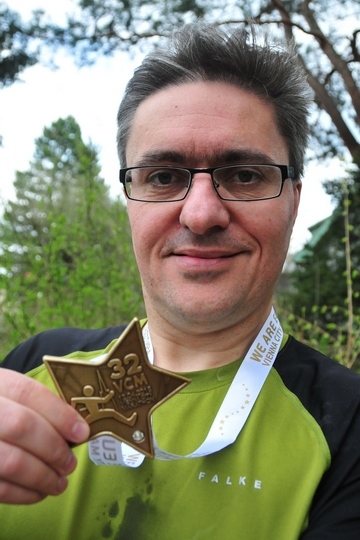 More than 9,000 runners completed the marathon, of 42,742 athletes overall who participated in five disciplines.
More than 9,000 runners completed the marathon, of 42,742 athletes overall who participated in five disciplines.We had a beautiful day, with sunshine in the morning and some light clouds and wind in the afternoon, and the volunteers, the co-runners and the spectators made this a friendly and enjoyable event.
One of my favorite signs, displayed by a supporter towards the end of the track, read: “Going back now would be a bad idea.” So we kept running.
My finishing time was 04:54:15.
I dedicate my first marathon to my dad, an experienced long distance runner who ran the Vienna City Marathon before, in just over three hours.
Thank you everyone for your encouragement, support and advise, and also for the generous donations for the #Run4CARE charity run.
PS. One small suggestion for the organizers: Waste bins after the supply stations would be great to keep the track at least somewhat cleaner. Running on layers of crunching plastic cups and through seas of Powerade is no fun.
Sunday, March 15, 2015
Wien Energie Halbmarathon 2015
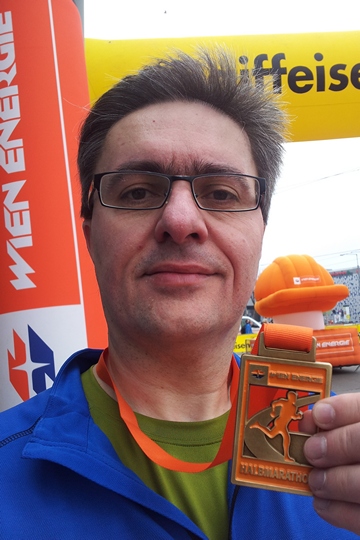 Weather conditions were fine, with 7°C, modest winds and no rain, and I had a nice run at almost constant speed throughout the race. I even ran right next to the unbeatable Lemawork Ketema, if only for a split second, as he was passing the field to start his third round. Thanks to the organizers, support staff, cheerleaders, drummers and spectators for making this a great event!
Weather conditions were fine, with 7°C, modest winds and no rain, and I had a nice run at almost constant speed throughout the race. I even ran right next to the unbeatable Lemawork Ketema, if only for a split second, as he was passing the field to start his third round. Thanks to the organizers, support staff, cheerleaders, drummers and spectators for making this a great event!Now that I have completed the half marathon distance, I have even more respect for the challenge ahead of me.
Next month I will #Run4CARE at the Vienna City Marathon and raise funds for charity. CARE is a leading humanitarian organization fighting global poverty, providing disaster relief and supporting sustainable development projects.
Please help my quest and support the “Packages for Children in Need” campaign. Thank you kindly!
Sunday, February 22, 2015
Running for charity: Vienna City Marathon
I have three goals for the Vienna City Marathon 2015:
- Running the full marathon distance and finishing the race in reasonable time.
This will be my first marathon. In fact, unless I find a good practice race, it will be my first running competition ever. Running the marathon should be doable still. I have run half-marathon distances just for kicks without much training. Finishing the race in reasonable time will be tougher. A friend of mine was joking that she walked faster than I ran. I will do my best but expect no miracles, anything before the cut-off time counts!
- Raising funds for “CARE – Packages for Children in Need”.
CARE is the charity of my choice for the Vienna City Marathon 2015. Whether you want to help a good cause or just motivate me to complete my first marathon, please donate now to keep those packages coming:
Raising funds for CARE and supporting children in need is an extra motivation to finish, if not an obligation to the charity team and to you, my dear friends, whom I trust to generously contribute to the #Run4CARE charity run.
All donations will go directly to CARE in support of the “Packages for Children in Need” campaign. CARE is a leading humanitarian organization fighting global poverty, providing disaster relief and supporting sustainable development projects. When crises or natural disasters force families to flee their homes, CARE is on site and provides emergency relief.
- Encouraging others to join in.
Lastly, I hope that others will join in, too. Running is an excellent way to improve physical fitness and also to refresh your mind. There is nothing like an early morning round in the park to start the day. I can do this, and so can you!
Related information
- Vienna City Marathon 2015 http://www.vienna-marathon.com/
- CARE Österreich http://www.care.at/
- CARE International http://www.care-international.org/
CARE Österreich has been awarded the OSGS quality seal for charities. Donations can be made by credit card and bank transfer.
Update: The Wien Energie half marathon mid March turns out to be a good test race, so I will run there first before I attempt a full marathon next month.
Friday, January 2, 2015
The 1 c Nikon battery fix
Recently my Nikon D300S, which had been a reliable companion and worked well under adverse conditions, started showing the dead battery syndrome quite frequently, and of course at the most inopportune times while shooting events. Cleaning the lens mount, replacing the battery and applying the long overdue firmware upgrade showed no noticeable improvement.
The problem seems to be with the battery compartment door. With frequent battery replacements, the door wears out and no longer applies enough pressure on the battery to ensure reliable contact. Fortunately there is a simple fix, and it doesn't cost more than 1 c (and a drop of glue).

Disclaimer: The Euro cent had the perfect thickness for my camera. Depending on wear and tear of your camera, alternate spacers such as a cardboard stripe may be more suitable.
Labels: photography
Thursday, October 2, 2014
How an internship turned into a twenty-five year journey
Tuesday, September 9, 2014
Vienna DevOps & Security and System Architects Group meetup summary - Sept 9, 2014
Best practices for AWS Security
Philipp Krenn (@xeraa) nicely explained the fundamental risks of AWS services:Starting services on AWS is easy. So is stopping.
Recent incidents show that a compromised infrastructure can cause more than short disruptions. Several companies went out of business when not only their online services but also data stores and backups were gone:
- Code Spaces goes dark after AWS cloud security hack
- DrawQuest permanently shuts down after security breach
- Bonsai.io suffers from an AWS security incident
- Lock away the root account. Never use this account for service or action authentication, ever.
- Create an IAM user with a password policy for every service or action to limit damage in case an API key gets compromised.
- Use groups to manage permissions.
- Use two-factor authentication (2FA) using Google Authenticator.
- Never commit your credentials to a source code repository.
- Enable IP restrictions to limit who can manage your services even with an API key.
- Enable Cloudtrail to trace which user triggered an event using which API key.
The (fancy!) slides are available here: https://speakerdeck.com/xeraa/i-am-what-iam-for-devops-vienna
ISO 27001 - Goals of ISO 27001, relation to similar standards, implementation scenarios
Roman Kellner, Chief Happiness Officer :-) at @xtradesoft, gave an overview of the ISO 27001 and related standards:- ISO 27001:2013 Information Security Management System (ISMS) Requirements
- ISO 27002:2013 Code of Practice
- ISO 31000 Risk Management
The structure of ISO 27001 looks somewhat similar to ISO 9001 Quality Assurance, including the monitoring and continuous improvement loop of Plan-Do-Check-Act (PDCA).
For a successful implementation and certification, the ISO 27001 efforts must be supported and driven by the company leadership
The third talk about Splunk unfortunately had to be postponed.
Labels: cloud, events, itarchitecture, security, technology
Monday, September 1, 2014
Removing thumbnails from JPEG images
Unfortunately not every image editor also updates the thumbnails. As a result, changes to images are only visible on the full image, not on the thumbnail preview.
That's where the marvelous ExifTool library and command-line application by Phil Harvey come into play. This one-liner removes the thumbnail image and related size information, and sets the file modification timestamp to the capture timestamp:
exiftool -if "$exif:IFD1:XResolution" "-filemodifydate<datetimeoriginal" -ext jpg -IFD1:all= %*
Combined with Matt Ginzton's CmdUtils, the full batch script for Windows removes image backup copies before and after processing:
@echo off
if exist *.JPG_original recycle -f *.JPG_original
exiftool -if "$exif:IFD1:XResolution" "-filemodifydate<datetimeoriginal" -ext jpg -IFD1:all= %*
if exist *.JPG_original recycle -f *.JPG_original
Labels: photography
Wednesday, July 2, 2014
My first summer job and what's the deal with those magnetic ledger cards
The little I remember from those days are fixed working hours from 8–12 and 14–18, with sufficient time for a lunch break at home, handwritten memos, a plethora of documents arriving every few hours that needed to be stamped, sorted, numbered, processed and forwarded to the next department or stored in the archive, and the mix of historic and then-modern business machines.
My responsibilities were mostly sorting and archiving documents, and typing letters on an ancient mechanical Underwood typewriter.
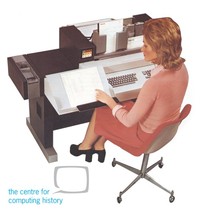
The accounting system was eventually re-implemented on an IBM System/36 minicomputer, and later ported to the IBM AS/400. As a teenager who proudly owned a Commodore 64, these big irons were quite impressive and a motivation to know more about business computing, data modelling and programming languages. (I still have a copy of the COBOL 78 manual, just in case.)
In the thirty years since my first summer job, there have been tremendous changes. No longer do most of us work fixed working hours, rarely do we exchange handwritten memos, and data processing usually means instantaneously and electronically, not in paper batches.
I am grateful for what I learned during my first summer job and during my professional career since, and looking forward to the next big shifts ahead.
Photo courtesy of The Centre for Computing History - Computer Museum, http://www.computinghistory.org.uk/det/505/philips-p354-visible-records-computer/
Labels: personal, technology
Saturday, May 24, 2014
Happy Birthday, www.ibm.com!
When the World Wide Web was created 25 years ago few people probably realized how much change this would bring, not only to the academic community where this started but to the world at large.
Twenty years ago, IBM published the first homepage on www.ibm.com. The initial site on May 24, 1994 had only a few pages of content and an audio greeting by then-CEO and Chairman Lou Gerstner. (That was the time when most homepages greeted visitors with “Welcome to the Internet”.) Among the things Gerstner said, in retrospective the most important statement was “We are committed to the Internet, and we are excited about providing information to the Internet community”.
Back then I was happily coding System/370 mainframe applications and just had my first encounter with the now defunct Trojan Room Coffee Machine at the University of Cambridge. SNA and Token Ring were our preferred network technologies, and access to the Internet required special permission and signing an NSFnet Acceptable Use Policy document outlining the rules for commercial activities on international networks. Soon much of our business would become e-business.
Only a few years later was I invited to join the www.ibm.com team, a very fine, special team. At a time when business was mainly local, we were already globally integrated, collaborating electronically through an internal IRC network (Alister, remember our daily "gma, hay?" routine) and eventually the predecessor of IBM Sametime.
Last week the creators of the first homepage and some who worked in Corporate Internet Programs in the early days came together in New York City for an unofficial “motherserver meeting” to celebrate the anniversary. I missed the party, but the pictures brought back memories of the good times (and yes, occasionally bad times) we had running the IBM Website.
Happy Birthday, www.ibm.com!
Labels: ibm, technology
Friday, August 30, 2013
ViennaJS meetup: Veganizer, Enterprise Software Development, Responsiveview, Web components
- Veganizer: Having fun with image manipulation using canvas and vegetables (including a commercial for filepicker.io) https://github.com/franzenzenhofer/veganizer by @enzenhofer
- Enterprise Software Development for JavaScript refugees – Scala.JS (and not EJBJS 2.0, LOL) @rafacm @sebnozzi
- Responsiveview: http://rv.k94n.com/ https://github.com/k9ordon/responsiveview.
Other tools at http://responsinator.com/ http://lab.maltewassermann.com/viewport-resizer @thisisgordon - Web components: Cool talk by @nikgraf about HTML imports and more. http://www.x-tags.org/ can be used to enable Web components in current browsers already
 Twitter hashtag: #viennajs
Twitter hashtag: #viennajsLabels: javascript, technology, webdevelopment
Wednesday, December 12, 2012
IT security beyond computers and smartphones
IT security is not just about computers and smartphones any more. Your smart TV may be allow attackers to get access to sensitive information and control the device, as security start-up ReVuln demonstrates for Samsung's Smart TV.
Once simple stand-alone receivers, TV sets, set top boxes and digital recorders are full featured computers and connect to home networks for downloading program guides and software updates, sharing pictures and videos and enabling social media integration.
Read more about recently discovered security flaws in home entertainment equipment on The Register.
Labels: security, technology


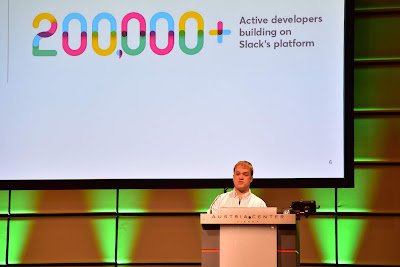











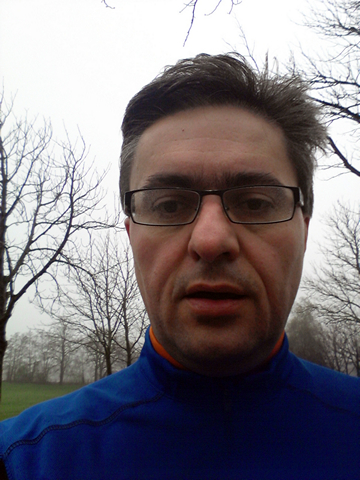 I have three goals for the Vienna City Marathon 2015:
I have three goals for the Vienna City Marathon 2015:


